How to Clean Your Shark Vacuum Filter: Easy Methods
Learn the basics of how to clean Shark vacuum filters properly is undoubtedly a must for any homeowner. Getting the hang of this procedure will help you ensure the hygiene, air quality in your house and give your appliance a longer lifespan.

To make this chore easier for you, I’ve put together some useful pieces of information to help you figure out how to conduct an accurate cleaning regimen, how often you should be cleaning the filters, along with some expert-sourced tips to save you time and effort.
Generally speaking, cleaning the different filters in your Shark vacuum is most certainly a straightforward process. If you’re ready, let’s get your vacuum filters back to their perfect working order!
Why Should We Clean Shark Vacuum Filter?
For most homeowners, a Shark vacuum is certainly a valuable investment into their homes. Therefore, the importance of keeping the vacuum clean and primed cannot be stressed enough, as this will advance you in more than one way if conducted properly.

Prolong The Vacuum’s Lifespan
A dirty filter tends to be the first culprit for airflow reduction, causing the dirt to accumulate on the internal components and eventually causing the vacuum to lose its suction functionality. Also, a packed-out filter will cause the motor to overheat and fail over time.
Therefore, by following a periodical filter cleaning regimen, you can rest assured of your vacuum’s proper working performance and increase its durability for many years to come.
Helps Keep Your Family Healthy
A quick vacuuming session on a daily basis helps to banish bacteria, dirt, and debris to create a healthier home living environment for your family. On a more important note, virtually all Shark vacuum models incorporate an advanced HEPA filtration system.
If it remained primed and clean, this filter works extremely well to get rid of allergen triggers out of your house, thereby protects your family members from consequent health issues.
Improve Indoor Air Quality
Asides from keeping your home hygienic, working with clean and primed filters also serves another purpose, which is improving the air quality inside of your home.
By sucking up any speck of dirt, debris, and allergen, your vacuum can be used to eliminate irritants in the air that cause asthma and allergy symptoms.
Prevent Mold And Dust Mites
Since dust mites and mold have microscopic sizes, getting rid of them with an efficient vacuum cleaner helps to increase your home’s hygiene. Plus, these dust mites can also leave behind body fragments, which are hazardous allergens to your family and pets.
If left uncleaned and wet, your vacuum’s filters stand a chance of becoming the breeding ground for these home invaders as well as decrease the vacuum’s performance.
Save Time And Efforts
Normally, dirty filters can cause the vacuum to lose its suction power. Thusly, you’ll likely have to go over the area with multiple passes and still can’t get it spotlessly clean as always.
In cases like this, such a simple chore can cost you more time, effort, and even frustration than you may think. Therefore, cleaning the filters plays a major role in maintaining the vacuum’s proper working order, so you can spare your free time for other interests.
Signs You Need To Clean Your Shark Vacuum Filters
Like other pieces of machinery, your Shark vacuum can develop issues over time, causing a significant decrease in its working performance. If you happen to notice these tell-tale signs while vacuuming your home, chances are, you’ll need to give your vacuum a deep clean.
1. Loss Of Suction
In a general sense, the most common culprit for your vacuum cleaner’s loss of suction is clogged filters. Most Shark vacuums feature an excellent filtration system of foam, a felt, and HEPA filters designed to trap debris and pollutants while letting the air pass through.
However, if uncleaned for a long time, these filters stand a chance of getting clogged, causing the machine to stop filtering and cutting off suction. If your vacuum leaves behind visible trails of debris and crumbs after several passes, it’s an indicative sign for a much-needed cleaning.
The following video will show you how dirty filters can contribute to causing a loss of suction in your Shark vacuum.
2. Unpleasant Odors
Shark vacuum filters tend to accumulate dirt and mold particles from everyday use. If you detect stinky, musty smells that linger after vacuuming your household, chances are, your equipment may be overdue for a thorough cleaning.
3. Strange Noises
Your vacuum is likely to make weird noises when in use if its filters are especially dirty or blocked by dirt buildups like fuzzy hairballs and other objects. In cases like this, the vacuum may make desperate, strained noises like it’s gasping for air while getting nothing sucked up.
If you don’t give your Shark vacuum some TLC rapidly, the sounds tend to get louder every time, posing a risk of damaging the motor since it has to exert more power to produce suction.
4. Visible Debris Left Behind
During cleaning, a Shark vacuum is designed to pick up mostly all dirt and debris for you. However, if you’ve gone over the floors multiple rounds and there’re still trails of visible dirt left behind, your machine might be signaling the need for an urgent filter cleaning.

What You’ll Need To Wash Shark Vacuum Filters
Like any other chores in your house cleaning checklist, you should always gather all the essential tools and equipment for the job before take-off. With these easy-to-find tools, you can ensure to leave no stone unturned and bring your vacuum back to its peak performances.
- Clean water
- Dishwashing liquid
- Microfiber cloths or soft rags
- Wood skewers
- A bottle brush or a soft-bristled brush
- Gloves and masks
Best Way To Clean Shark Vacuum’s Filters
With all the tools needed in hand, let’s take you through a step-by-step guideline on how to get your Shark vacuum filters primed and clean again. These basic maintenance steps should ensure you a long-lasting and powerful vacuum to keep your home spotless all the time.
Step 1: Unplug And Remove The Filters
Similarly to cleaning a vacuum’s hose and dust canister, before performing any cleaning procedure, it’s important that you switch the machine off and disconnect the plug from the electrical outlet.
Then, you can remove the dust canister to access the premotor filters.
These may include foam and a felt filter depending on the specific Shark vacuum model. Also, be sure to pay some special attention to the placements of the filters so that you can easily assemble them in the exact same order after cleaning.
Other than these premotor filters, Shark vacuum cleaners are also equipped with a HEPA filter, which can trap and contain roughly 99.9% dirt and allergens in the air. In most models, this filter is often located behind the filter door at the lower front of the appliance.

Step 2: Remove Excess Dirt
To shake off the dirt and dust particles that have settled on the filters, you should gently tap them against a hard surface. Then, take a soft-bristled brush and lightly scrub it to remove any wedged grime on the filters rather than intensively rubbing.
It’s also noteworthy that this work should be carried out in an outdoor space or right above the dustbin to prevent these grimes from getting back into your household.
Step 3: Rinse The Filters
Since your Shark vacuum filtration system consists of multiple filters of different textures and uses, their cleaning regimens should be conducted with extra caution. You might also want to consult the owner’s manual prior to the chore to avoid cleaning any non-washable filter.
Foam Filter
Foam filters are best hand-washed under plain and cold running water. You should gently scrub and squeeze it to fish out the remaining dirt until the water runs clear rather than aggressive rubbing, which is likely to leave permanent damages on the filter.
If the filter appears too dirty and extremely dark in color, you can consider washing it in a sink of soapy water. However, for maximum security, consult the manual beforehand to see if the manufacturer recommends against it.
For a Shark vacuum that has been in your house for years, chances are, its foam filter won’t return to its original white and bright appearance even after a good scrub. As long as it’s not broken, torn, or ruptured, your filter is still good to go.
Felt Filter
Felt filters are susceptible to damages and deformation, which is why the manufacturer usually advises against washing them. Thusly, if these filters seem too filthy to function properly, you can lightly tap on them to shake off the dirt and wipe them dry with a microfiber cloth.
On the other hand, if you choose to wash your felt filter, it’s best to wash it in soapy water and gently rub it until the grimes come out. Remember that you’re doing this at your own risk.
HEPA Filter
This additional filter in a Shark vacuum serves as the second stage of filtration to trap any fine dust and allergen that have escaped through the premotor filters. To access the HEPA filter, you can press the button underneath the filter door, tilt the door to lift it up to pull out the filter.
The post-motor filter’s location varies among different models, but it’s often located near the motor and underneath the machine. If this is causing trouble, take a look at the manual to ensure you’re looking in the right direction.
Since most Shark models come in the set with two HEPA filters, you can still vacuum your home while waiting for the filter to air-dry after cleaning for maximum comfort.
Normally, cool running water is the best way to go when it comes to cleaning HEPA filters. Wash it under plain tap water and lightly rub it on both sides to eliminate the dirt and debris. You’ll know that your filter is clean and primed once the water runs clear.
If you plan to add some drops of cleaner, it’s best that you choose a non-abrasive liquid detergent or soap since these cleaners pose a risk of affecting its functionality.

Step 4: Leave Them To Air-Dry
Rather than reinstalling them wet, you should always allow the filters to air-dry completely before popping them back into the vacuum. Depending on where you place them, this process can take up to 24 hours or more to get rid of all excess water.
This is because wet filters are potential breeding grounds for mold, mildew, and bacteria, causing not only musty smells when the machine is in use but may also decrease its deficiency and motor in the long run.
Step 5: Reinstall The Filters
Once the filters are all clean and dry, it’s time to pop them back into the filtration system. Make sure that you put the felt filter back first, then the foam filter on top before reattaching the dirt canister. Also, after putting the HEPA filter in place, don’t forget to lock the grill door.
If you have an excessively dirty Shark vacuum, learn how to clean its filters in a few easy-breezy steps as follows.
Extra Tips To Wash Shark Vacuum Filters In Different Models
Since there’re various Shark vacuum models in the market, their filters are likely located in different places and call for specific cleaning requirements. The following notes will give you a more detailed guideline to clean and keep your vacuum up to par.
Shark Rotator Vacuum
The Shark rotator vacuum is easily one of the best upright vacuum models for your home as it clears out mostly all dirt and pet hair within minimal passes. Therefore, cleaning its filters periodically is essential to keep it working at its best.
This appliance is equipped with two premotor filters and a HEPA filter, all of which are located at the lower front of the vacuum. You should conduct a cleaning session once every three months with the foam and felt filters and once a year with the HEPA filter.
These components are best hand-washed with cold water only to avoid any functional damage. What’s more, it’s crucial to allow them at least 24 hours to air-dry before respectively putting them back with the felt filter coming first.
Take your time for this quick guide from the manufacturer to make sure you’re cleaning your Shark Rotator vacuum filters the right way.
How to maintain your Shark Rotator vacuum’s filters
Shark Cordless Vacuum
Depending on the specific cord-free model, these Shark vacuums either incorporate one or two premotor filters along with a HEPA filter. With these vacuums, you should keep in mind to remove their batteries before conducting any maintenance.
After pulling the tabs on the filter frame, carefully slide the filter off of the filter frame to wash under plain tap water. This should be carried out every month at the very least to prevent the dirt from accumulating inside.
The removal process for the HEPA filter is as simple as its premotor counterpart. After rinsing it under cold water, be sure to let the filters dry in the air for 24 hours before reinserting it into the machine. For optimal use, your HEPA filter should be washed every nine months.
If you’re still unclear of the process, here’s a quick demonstration from the expert to help you clean Shark Cordless vacuum filters.
Shark Rocket Vacuum
The Shark Rocket vacuum comes with three different filters installed at the back of the dust canister. The ultimate option is to wash all three of them under clear running water.
However, if they’re excessively filthy with lots of dirt to remove, you might as well fill up a sink with warm soapy water. While the two premotor filters are best washed every month, their post-motor counterpart can get by with just one deep cleaning per year.
You can expect the large foam filter to appear like new afterward, but the other two may remain with dark spots. As long as they remain intact and undamaged, these Shark Stick vacuums can efficiently pick up dirt without any problem.
Consult how a professional vacuum cleaner washes his Shark Rocket filters right here!
Shark Navigator Vacuum
A Shark Navigator vacuum is the top-notch vacuum for hard-to-reach areas in your household. Since this machine is designed to collect microscopic debris, you’ll have to be more diligent to keep its filters clean for optimal functionality.
For the best efficiency, you can disassemble and tap on the premotor filters on your Shark Navigator vacuum between uses or washes to get rid of the remaining dirt on a regular basis. Also, every three months, gently rinse and squeeze them in clean water.
To have access to the port-motor filter, you can push the button underneath the filter door and lift it off before revealing the HEPA filter. Again, you should only hand-wash it under tap water, and be sure to allow it enough drying time of 24 hours before putting it back.
This video will demonstrate how you can properly clean a Shark Navigator vacuum in minutes.
Shark Robotic Vacuum
The Shark Robotic vacuum has gained popularity as one of the most powerful suction vacuums, especially when it comes to grabbing up large and stubborn debris. To ensure that this appliance is in its top working performance, the filters need to be cleaned once a month.
You can rinse the foam and felt filters with water and allow 24 hours for them to air-dry, preferably in horizontal positions, before reinserting them into the vacuum.
Meanwhile, with the post-motor filter, you should remove the foam from the filter and only tap it over the trash bin to release any wedged dirt rather than rinsing in water, as suggested by the manufacturer. Once finished, don’t forget to reattach the foam and reinstall the filter in place.
With this quick example of cleaning a Shark Robotic vacuum’s filters, you can visualize the simple steps to get your filters primed again.
How Often Should You Clean Shark Vacuum Filters?
Generally speaking, the frequency at which you should clean your vacuum’s filters is largely a matter of how often you vacuum the house, the size, traffic of your home, and the particular Shark model that you own.
However, most Shark owner’s manuals instruct that you should give the premotor filters a cleaning session every month. It’s also important that you empty out the dust canister after each use to make your cleaning efforts more effective and successful.
On the other hand, a single HEPA filter can go on for a whole year before needing any washing. If you have a lot of rooms to vacuum on a regular basis, you’ll want to be more diligent with your filter cleaning schedule.
When Should You Replace Shark Vacuum Filters?
If the filters appear torn, excessively worn out, or damaged, they may be signaling a much-needed replacement. Also, if your vacuum’s suction ability seems to deteriorate even after cleaning the filters, it’s probably a good time to replace the filters.
Otherwise, if you’re too busy to detect the vacuum’s signs of suction loss, a safer option to go for is to change the filters at least once a year. This will ensure that the filters’ efficiency is up to par, thusly prevents the motor from overheating and gives it a longer lifespan.
On a side note, when purchasing a filter replacement, you’ll need it to match your Shark model. The model number should be easily detectable on the side or base of the vacuum.
After you’ve got the new filters on hand, simply take out the old filters, wipe the filter frame with a clean cloth, and insert the new ones in.
Helpful Tips For Cleaning Shark Vacuum Filters
Asides from the basic guides to restore your Shark vacuum filter’s former state, I’ve compiled some expert-sourced tips so you can get the work done like a breeze.
1. Wear A Mask
While this is oftentimes ignored by lots of homeowners, wearing a mask when sanitizing a vacuum’s filters is super essential. This is even more important if you or your family are asthma or allergy suffers since a filter is where allergy triggers are trapped at.
2. Completely Air-Dry Before Reinserting
Since your Shark vacuum is an electrical appliance, reinstalling filters while they’re still wet poses a risk of electrocution and other severe damages to the machine. What’s more, wet filters are also potential breeding grounds for bacteria, mold, and mildew.
Therefore, you should always allow the filters to air-dry completely for at least 24 hours, preferably in horizontal positions. For maximum security, do a physical check for moisture with a touch test before popping them back into places.
3. Have Gloves On
During the cleaning process, having a pair of rubber gloves on is necessary, especially if you plan to use soapy water. For homeowners who don’t wash their filters regularly, a messy scenario may occur, which tends to call for some gloves to keep your hands protected.

4. Consult The Owner’s Manual
To ensure that you’re disassembling and putting the vacuum back together in an accurate way, it’s best to take a look at the manufacturer’s manual before having a kick-start. The last thing you’ll want is a malfunctioned vacuum after reinserting the filters.
FAQs
If you’re still a bit unclear of any part of this cleaning procedure, the following pieces of information are sure to help you get a better idea before getting the ball rolling.
Expectations vs. Reality
In essence, cleaning your Shark vacuum filters should be a part of your periodical maintenance routine. With clean and primed filters, you can rest assured that your appliance will function well to get rid of all dirt, debris, and allergens from your household.
In addition to strictly following the recommended steps, it’s also important to be gentle on the filters, as this may cause them to tear and disintegrate. On a side note, if you notice that your vacuum’s suction doesn’t improve after this, it may be calling for filter replacements.
I hope the previous information and expert-sourced advice have been helpful for you. Whether there’s any part of the guide that’s hard to follow or that you still have questions regarding this cleaning regimen, I’ll be glad to help you solve the issue!



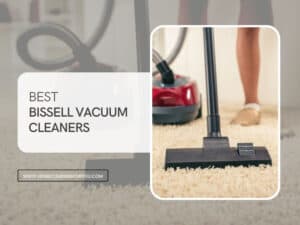
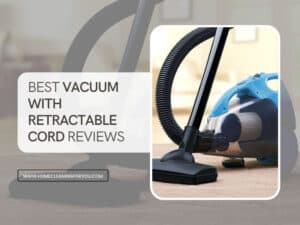
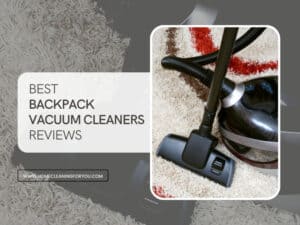
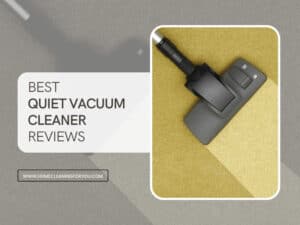
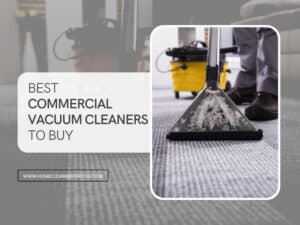
Kevin Jones
Founder & Chief Home Organization Strategist
Expertise
Home Organization & Decluttering, Efficient Cleaning Methods & Stain Removal, Sustainable Cleaning Practices, DIY Home Maintenance & Repairs, Space Optimization & Storage Solutions, Budget-Friendly Home Care Strategies
Education
University of Texas at Austin
Kevin Jones is the Founder and Chief Home Organization Strategist at HomeCleaningForYou.com.
He earned a Bachelor of Science in Interior Design from the University of Texas at Austin, focusing on space planning and sustainable design. Specializing in home organization, decluttering, and budget-friendly home care, he helps homeowners create functional and stylish spaces.
Kevin has been featured in lifestyle publications and has collaborated with eco-friendly brands on home organization solutions. He shares his expertise through DIY guides, workshops, and online tutorials. Passionate about minimalism, he enjoys testing new organization methods and exploring sustainable living ideas.